Picture this: you've invested time and money into building an impressive wine collection, only to find that the taste and aroma of your prized bottles have been compromised. The culprit? Improper wine storage conditions. Ensuring that your wine is stored at the right temperature and in the right environment is crucial for preserving its quality and complexity.
But how do you know which wine fridge is the best fit for your needs? In this blog post, we'll explore the temperature range of wine refrigerators, including how cold does a wine fridge get, the optimal storage temperatures for different wines, and the factors that influence wine storage conditions to help you make an informed decision.
Short Summary
- Understanding the temperature ranges of wine fridges is essential for preserving wine flavour and aroma.
- Different types of fridges offer different storage temperatures to accommodate various wines, with optimal temperatures ranging from 40-67°F depending on type.
- Factors such as humidity, light exposure, vibration exposure must be controlled in order to maintain quality and longevity of stored wines.
Understanding Wine Fridge Temperature Ranges
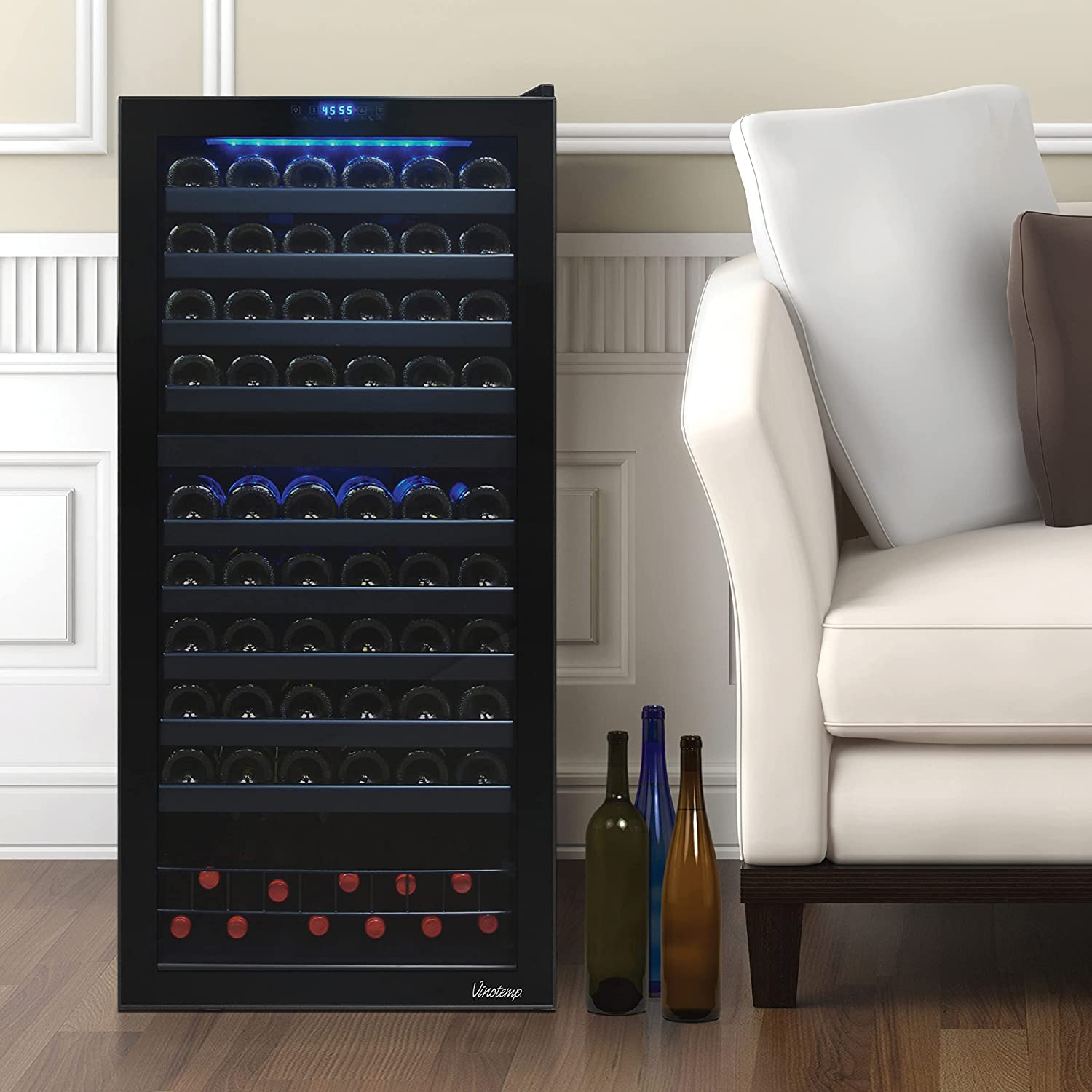
The world of wine storage can be overwhelming, especially when it comes to understanding the temperature range of wine fridges. A wine refrigerator, also known as a wine cooler or wine fridge, is specifically designed to provide the ideal temperature and humidity conditions for storing wine.
By understanding the temperature range of wine coolers and fridges, you are better equipped to maintain the flavour and aroma of your cherished wine collection.
Wine fridges come in various types, including single-zone, dual-zone, and triple-zone models. Each type offers a distinct temperature range and is designed to cater to different wine storage needs. The temperature range of standard wine fridges typically falls between 40 and 67 degrees Fahrenheit.
So let's take a closer look at the different wine fridge types and their respective temperature ranges.
Single-Zone Wine Fridges
A wine fridge is a device designed specifically for the purpose of storing beverages. It usually comes in two varieties: single-zone and multi-zone.
Single-zone fridges provide only one temperature setting, while multi-zone types allow for different temperatures in separate zones. This type of wine fridge may be suitable for those who primarily store one type of wine, such as red or white.
However, storing both red and white wines in a single-zone unit is possible, albeit not recommended. By positioning red wines on the upper shelves of the unit, they will be situated in the warmest portion of the cooler.
If your collection consists of a single type of wine, a single-zone wine fridge might be the perfect fit.
Dual-Zone Wine Fridges
For wine enthusiasts with a more diverse collection, a dual-zone wine fridge may be a better option. A dual-zone wine fridge provides two temperature settings within two distinct compartments. This allows you to store red and white wines at their respective ideal temperatures, enhancing their flavours and aromas.
For instance, red wines can be stored on the top shelves at a slightly warmer temperature, while white wines can be chilled in the upper zone at just a few degrees cooler temperature. A dual-zone wine fridge is a versatile choice that caters to the needs of those who savour a variety of different wines.
Triple-Zone Wine Fridges
For the ultimate wine connoisseur, a triple-zone wine fridge offers the most flexibility in storing various varieties of wine, such as red, white, or sparkling.
A triple-zone wine fridge features three distinct temperature zones, each with a range of 41°F to 64°F. This allows you to store various types of wine at their ideal temperatures, ensuring that each type of wine is kept in the most beneficial conditions.
A triple-zone wine fridge is an excellent investment for those with an extensive and diverse wine collection.
Optimal Storage Temperatures for Different Wines
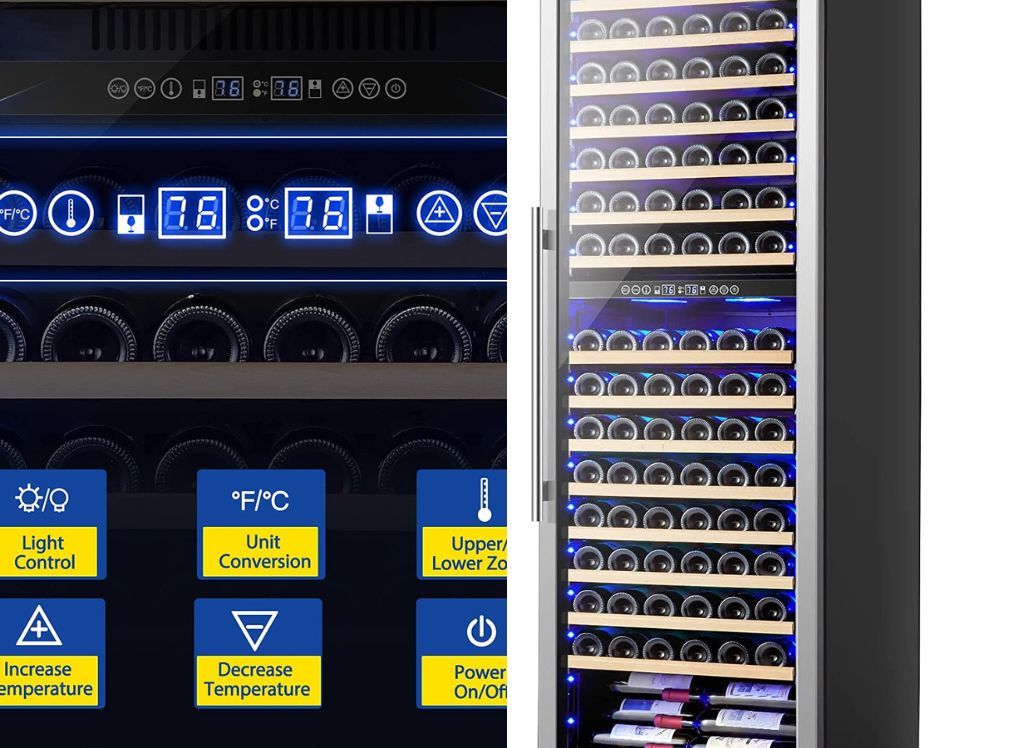
The importance of storing wine at the ideal temperature cannot be overstated. The temperature at which wine is stored plays a critical role in preserving its flavour and aroma, as well as preventing unwanted chemical reactions that can alter its taste. The recommended storage temperatures for different wines are as follows: reds should be stored at 66-67°F, whites at 52-55°F, and sparkling wines at 40-45°F.
Now, let's delve deeper into the ideal storage temperatures for each type of wine.
Ideal Temperatures for Red Wines
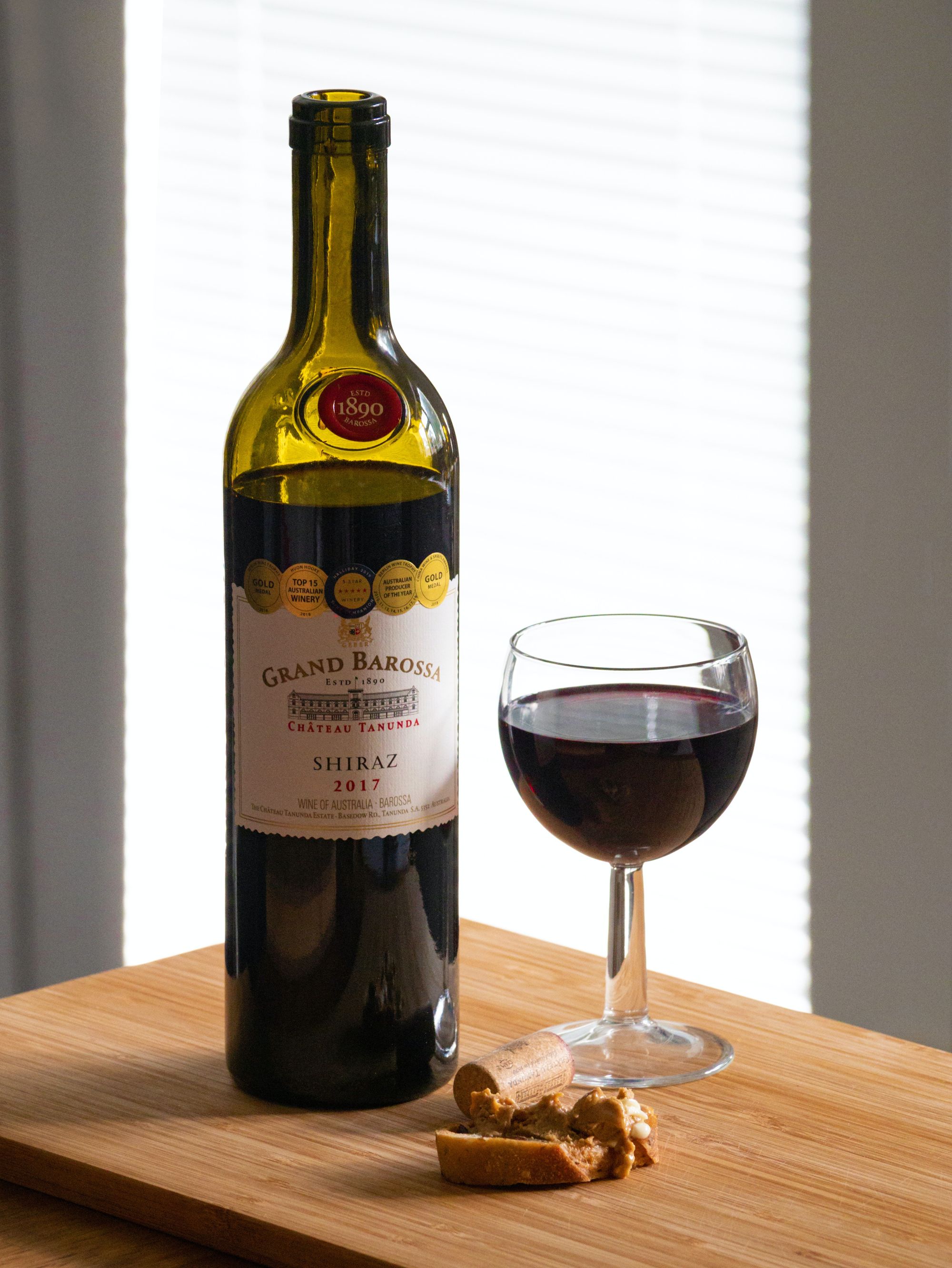
For red wines, it is suggested that they should be stored at a temperature of 66-67°F. This temperature range allows the wine to age gracefully, preserving its complex flavours and aromas.
The optimal serving temperature for red wines is slightly lower, at around 60°F. Light-bodied red wines, such as Pinot Noir, can be served at a slightly cooler temperature of 60 to 62 degrees Fahrenheit.
It is essential to always store wines and serve red wines at the appropriate temperatures to ensure the best possible wine experience.
Ideal Temperatures for White Wines
White wines, on the other hand, should be stored at a temperature range of 52-55°F. This temperature range helps maintain the delicate balance of flavours and aromas in white wines. If stored at temperatures that are too warm, white wines may become too acidic, altering their taste.
To enjoy white wines at their best, serve them within the range of 45-55°F, depending on the specific type of white wine. Proper temperature control is crucial for preserving the quality of your white wines.
Ideal Temperatures for Sparkling Wines
Sparkling wines require a slightly different storage temperature than their red and white counterparts.
The ideal temperature for storing sparkling wines is between 40 and 45 degrees Fahrenheit. Maintaining this temperature range preserves the flavour and aroma of sparkling wines while preventing them from becoming overly acidic or sweet.
To ensure the optimal temperature range for storing sparkling wines is achieved, store the wine away from direct sunlight, utilize a wine fridge, and monitor the wine fridge temperature range regularly.
Factors Affecting Wine Storage Conditions
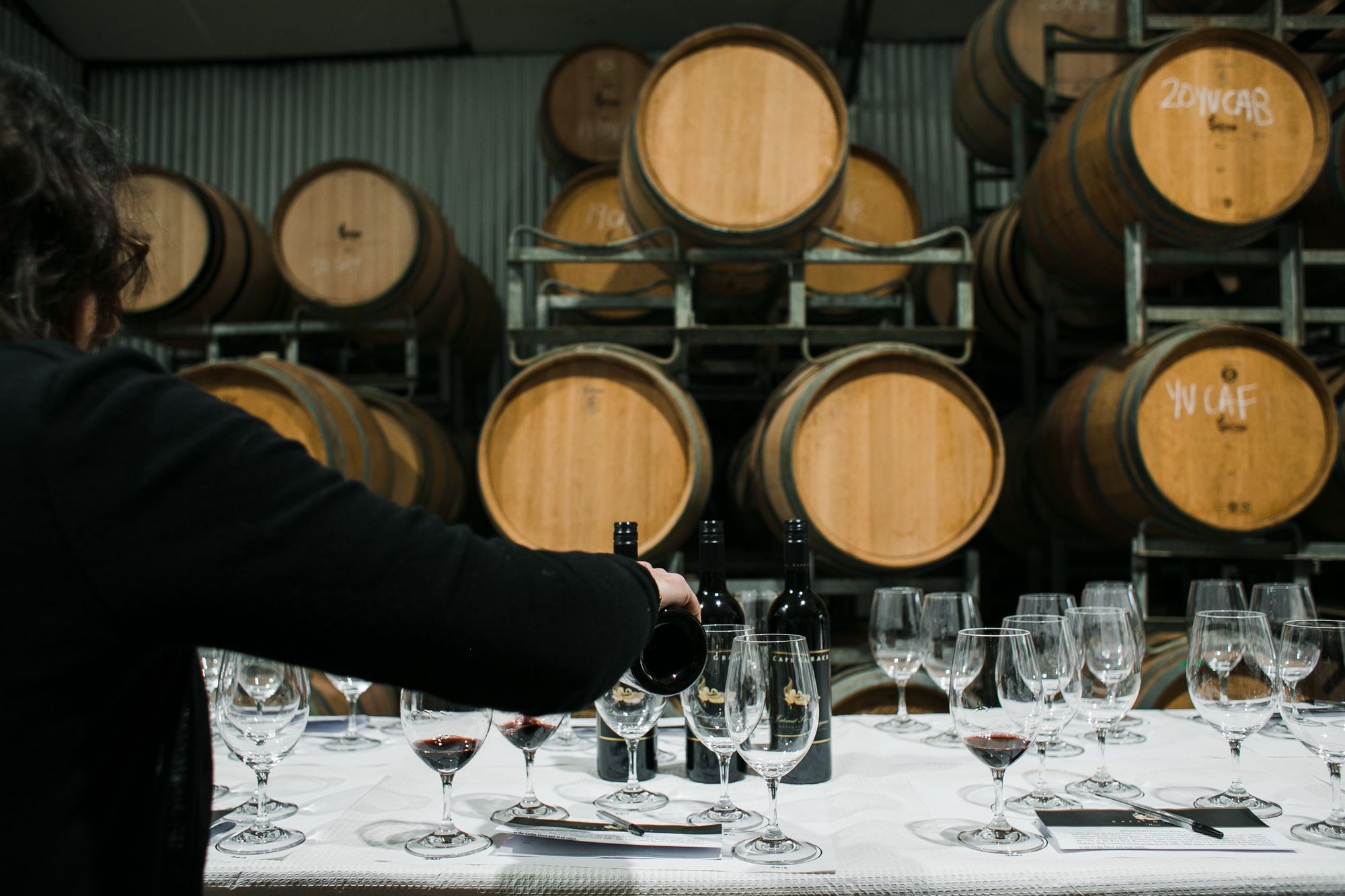
In addition to temperature, several other factors can influence wine storage conditions. These factors include humidity control, light exposure, and vibration exposure. By understanding these factors and addressing them in your wine storage setup, you can further enhance the quality and longevity of your wine collection.
Let's explore each of these factors in more detail.
Importance of Humidity Control
Humidity control is a crucial aspect of wine storage. Maintaining the proper humidity levels in wine storage prevents moisture from escaping the wine bottle and affecting the cork, which could ultimately have an adverse effect on the quality of the wine. Wine bottles should be stored in an environment with optimum humidity. This level lies between 50% and 70%.
A damaged cork could allow air to enter the bottle, causing the wine to oxidize and be irreparably damaged. To ensure the longevity of your wine collection, it's essential to maintain proper humidity levels in your wine storage environment.
Protecting Wine from Light Exposure
Exposing wine to direct light, especially sunlight, can have detrimental effects on its quality. Light exposure can cause wine to age prematurely, develop off-flavours, and produce undesirable sulfur compounds.
To protect your wine from light exposure, store it in a dark place or use a wine fridge with a UV-resistant glass door. By shielding your wine from harmful light, you can preserve its flavour, aroma, and overall quality.
Minimizing Vibration Exposure
Vibration exposure can also negatively impact the quality of your stored wine. Vibrations can disturb the chemical balances in wine, resulting in unfavorable modifications in taste and aroma, and impair its ability to mature over time.
Thermoelectric wine coolers are an excellent option for minimizing vibration exposure, as they generate fewer vibrations than compressor-based models. By reducing vibration exposure in your wine storage environment, you can ensure that your wine matures gracefully and maintains its complex flavours and aromas.
Serving Temperatures vs. Storage Temperatures
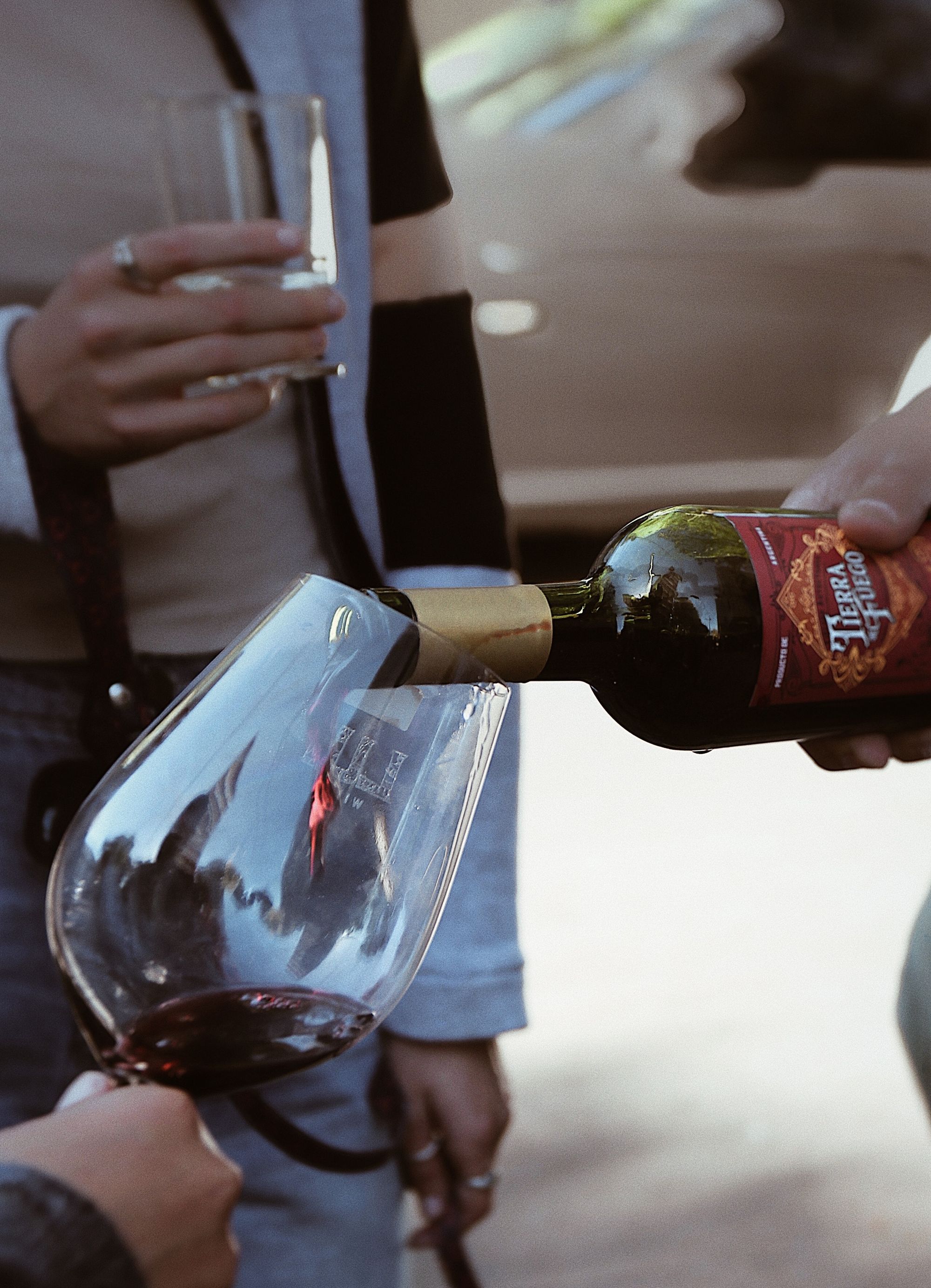
While storing wine at the correct temperature is essential, it's also important to distinguish between serving and storage temperatures. Storing temperatures are generally lower than serving temperatures. Storing temperatures typically range between 45-55°F, while serving temperatures usually fall between 55-65°F.
To ensure the best possible wine experience, it's crucial to serve wine at its optimal serving temperature. Let's explore the impact of serving temperature on wine taste and learn some tips for achieving the perfect serving temperature.
The Impact of Serving Temperature on Wine Taste
Serving wine at the ideal temperature can reveal the intended flavour and enable the tannins to be aerated and all the tastes to be harmonised. For red wines, the optimal serving temperature is around 60°F, while for white wines, it's between 45 and 55°F.
Champagne and dessert wines should be served at an even cooler temperature, between 5 and 7°C. By serving wine at the right temperature, you can enhance its taste and provide an optimal wine experience for yourself and your guests.
Tips for Achieving the Perfect Serving Temperature
To achieve the perfect serving temperature, it's vital to store your wine in an appropriate temperature range. For red wines, store them between 45-55°F, and for white wines, store them between 45-55°F as well.
Before serving, it's beneficial to allow the wine to sit for a few minutes to allow it to reach the desired temperature. If your wine is too warm, chill it for a few minutes in a standard refrigerator to attain the optimal temperature prior to serving.
By following these tips, you can ensure that your wine is served at the perfect temperature for maximum enjoyment.
Choosing the Right Wine Fridge for Your Needs
Selecting the right wine fridge for your needs can be a daunting task, given the multitude of options available on the market. To choose the right wine fridge, it's essential to assess your wine storage needs and compare different models and features.
Factors to consider when assessing your wine storage needs include the size of your collection, the type of wine being stored, and the required temperature range. In the following subsections, we'll discuss how to assess your wine storage needs and compare different wine fridge models and features.
Assessing Your Wine Storage Needs
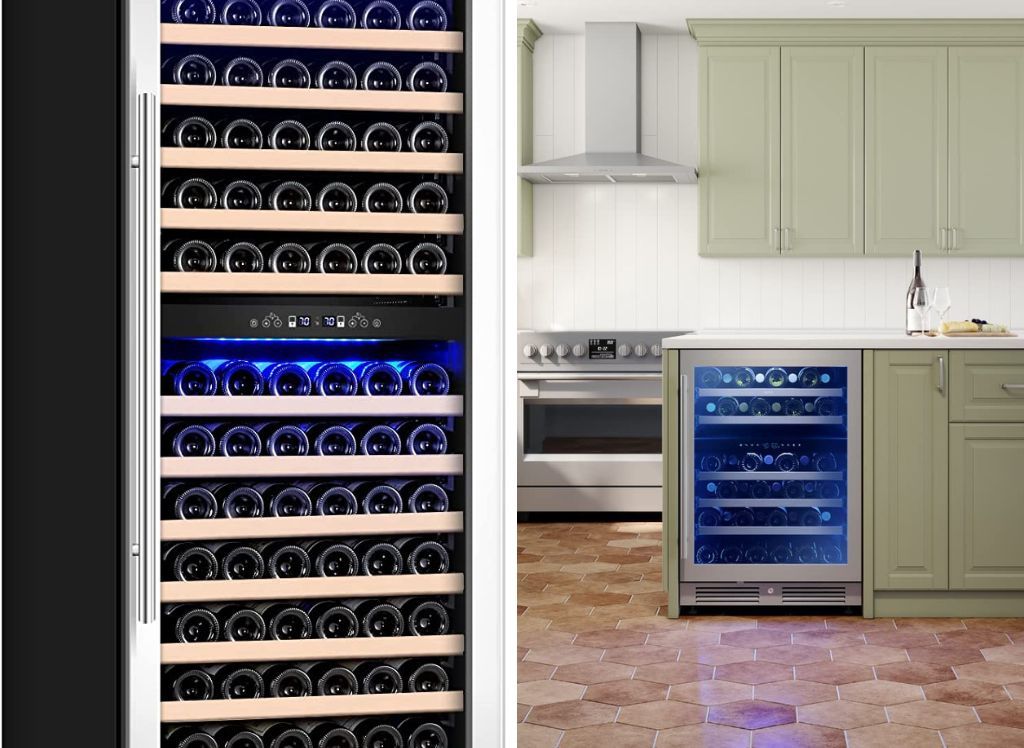
When selecting a wine fridge, it's important to consider the capacity, number of cooling zones, type of cooling technology, and humidity control. The ideal storage temperatures for various wines should also be taken into account, with red wines requiring a temperature range of 55-65°F, white wines a range of 45-55°F, and sparkling wines a range of 40-50°F.
Additionally, consider the elements influencing wine storage conditions, such as humidity regulation, light exposure, and vibration exposure.
By evaluating your wine storage needs, you can choose the right wine fridge that meets your requirements and ensures the optimal storage conditions for your collection.
Comparing Wine Fridge Models and Features
Once you've assessed your wine storage needs, it's time to compare different wine fridge models and features. Look for a wine fridge with temperature control, humidity control, UV protection, vibration reduction, multiple temperature zones, and sufficient storage capacity.
Additionally, consider whether a freestanding or built-in wine fridge is more suitable for your space and needs. By comparing various wine fridge models and their features, you can make an informed decision and choose the right wine fridge that will provide the best possible environment for your wine collection.
Maintaining Your Wine Fridge for Optimal Performance
Regular maintenance of your wine fridge is essential to ensure optimal performance and the correct temperature for your wine. In this section, we'll discuss the importance of regular cleaning and maintenance, as well as some tips for troubleshooting common wine fridge issues.
Regular Cleaning and Maintenance
To keep your wine fridge functioning at its best, it's important to clean and maintain it regularly. This includes thoroughly cleaning the interior and exterior, inspecting the temperature settings, and replacing any worn or damaged components.
It's advised to clean the fridge every 3-6 months and remove debris at least annually. By maintaining your wine fridge, you can guarantee optimal performance, maximum efficiency, and the correct temperature for your wine collection.
👉 Related Reads: White Wine Temperature, Wine Fridge vs Wine Cooler, Dual Zone vs Single Zone Wine Cooler, Red Wine Temperature, Wine Fridge Temperature, How to Drink Wine, How to Serve Wine Properly,How to Serve Wine Properly, How to Decant Wine, Storing Wine at Home, How to Choose a Wine Fridge
Troubleshooting Common Wine Fridge Issues
Common wine fridge issues include a broken evaporator, a defective thermostat, dirty coils, and a faulty fan. These issues can result in the wine fridge ceasing to cool or experiencing temperature fluctuations.
To troubleshoot these issues, inspect the evaporator for damage, check the thermostat for proper functioning, examine the coils for dirt or debris, and assess the fan for proper operation. By addressing these common issues, you can maintain the optimal performance of your wine fridge and ensure the best possible wine storage conditions.
If you are in need of a wine fridge, then check out our blog post article below and our top picks and reviews of the 5 best wine fridges.
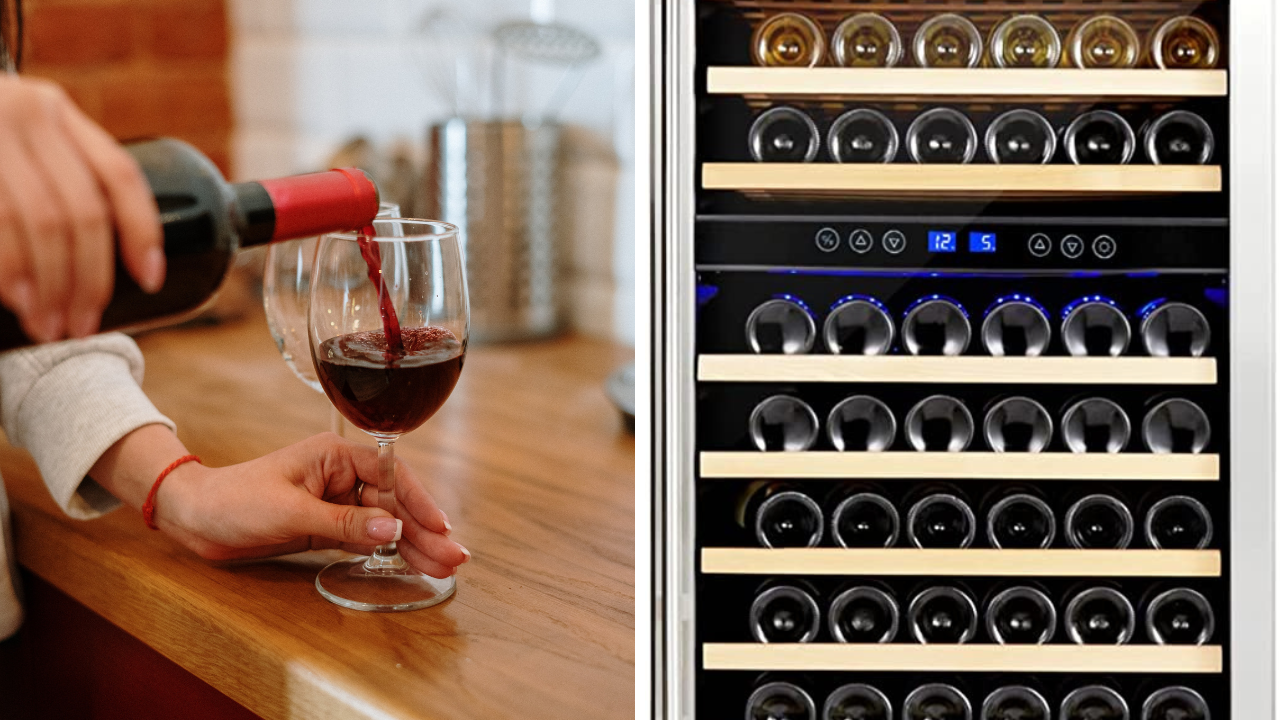
You may also like our top picks on the best under counter wine fridge.
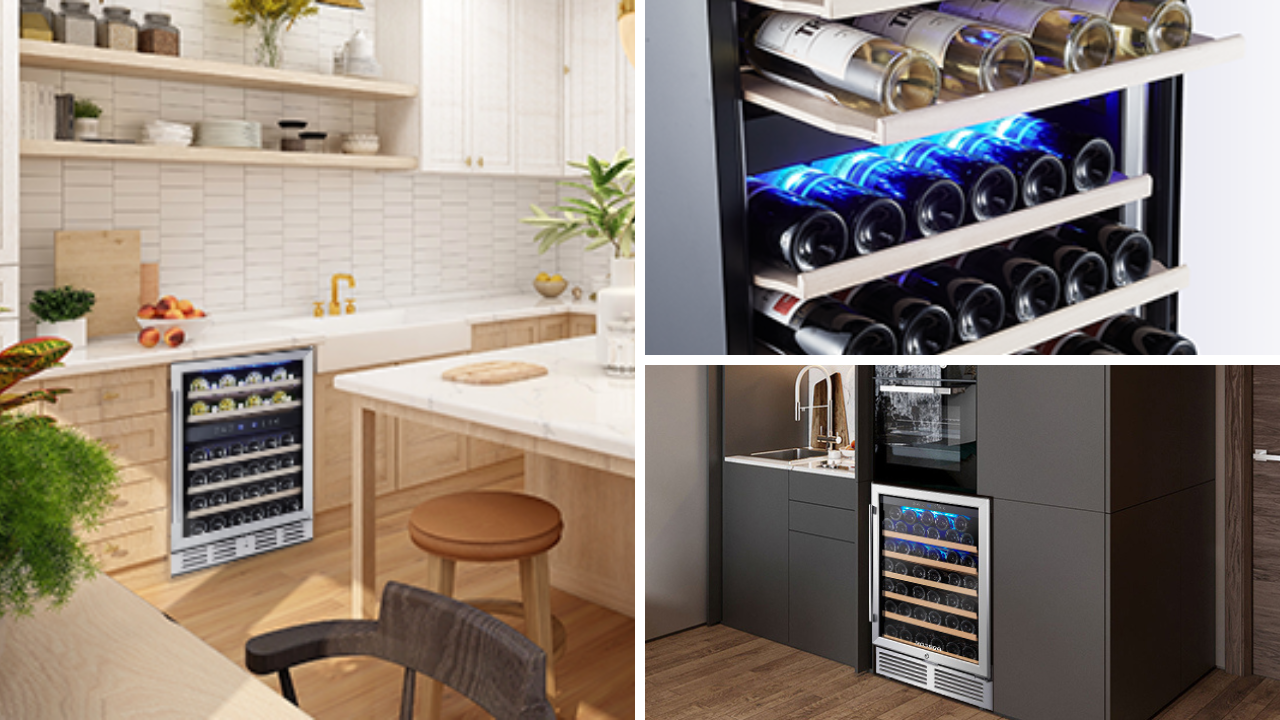
If you happen to be short on space then our top picks for a slim wine fridge may interest you.
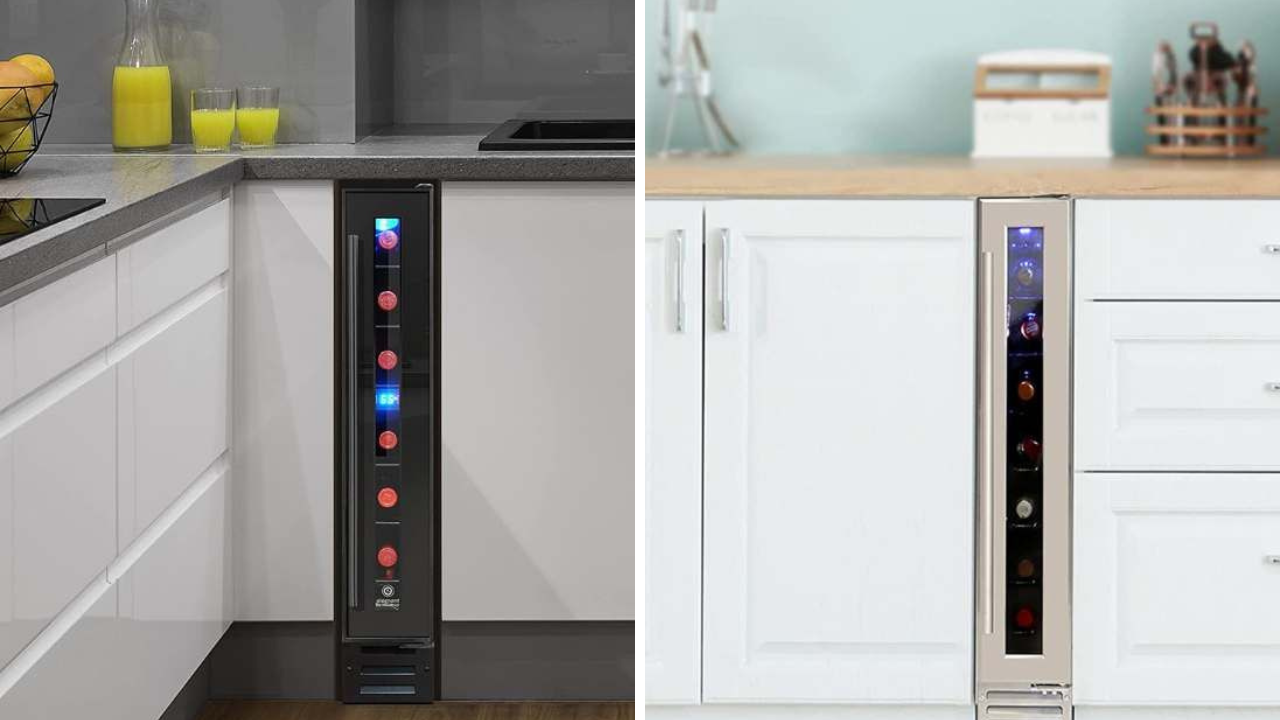
If you have a large wine collection then check out our article on the best large wine fridge.
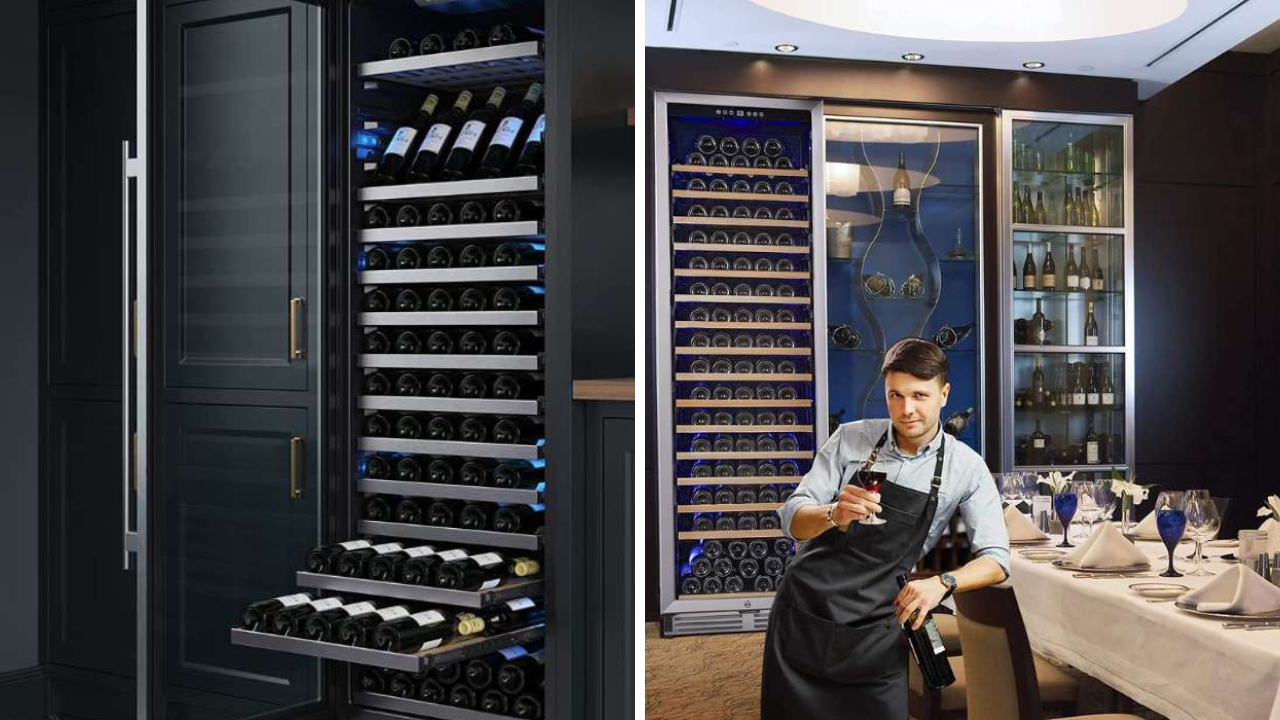
Summary
In conclusion, understanding the temperature range of wine refrigerators, the optimal storage temperatures for different wines, and the factors that influence wine storage conditions is crucial for preserving the quality and taste of your wine collection.
By choosing the right wine fridge, maintaining it properly, and serving your wines at their ideal temperatures, you can elevate your wine experience and enjoy the true essence of each bottle. So raise a glass to your newfound knowledge and toast to the perfect wine storage solution for your needs.
Frequently Asked Questions
How cold should a wine refrigerator get?
For optimal wine storage, a wine refrigerator should be set at a temperature range between 45°F to 65°F. The lower range is optimal for white wines, while the higher range is more suited to red wines.
This range is important when drinking wine to ensure that your wines maintain their flavour and quality over time.
Does a wine fridge get as cold as a normal fridge?
Based on the available evidence, it is clear that a wine fridge does not get as cold as a normal fridge. It has a limited temperature range between 45°F and 65°F while a regular fridge typically has a temperature range of 40°F or lower.
This difference in temperature range is important to consider when deciding which type of fridge to purchase. Wine fridges are designed to store wine at the optimal temperature for ageing, while regular fridges are designed to store wine at the optimal temperature for ageing.
Is a wine fridge cold enough for food?
For food storage, a wine fridge can work; however, it is not the ideal temperature range long term storage. Beer and wine usually do better in temperatures around 55 degrees Fahrenheit. Some higher-end wine fridges offer greater temperature control so that you can adjust them for optimal food storage.
Overall, a wine fridge may not be the best choice for food storage due to its cooler temperatures. While some models offer more precise temperature control, most of them are designed for storing beer and wine at temperatures around 55 degrees Fahrenheit - which may not be ideal for all foods.
What is the temperature of a wine fridge vs regular fridge?
When it comes to storing wine, the temperature of a traditional fridge does not meet the ideal range for most wines. Wine fridges provide much more control over temperatures, allowing them to remain in the ideal 45°F and 65°F range for storing wines.










